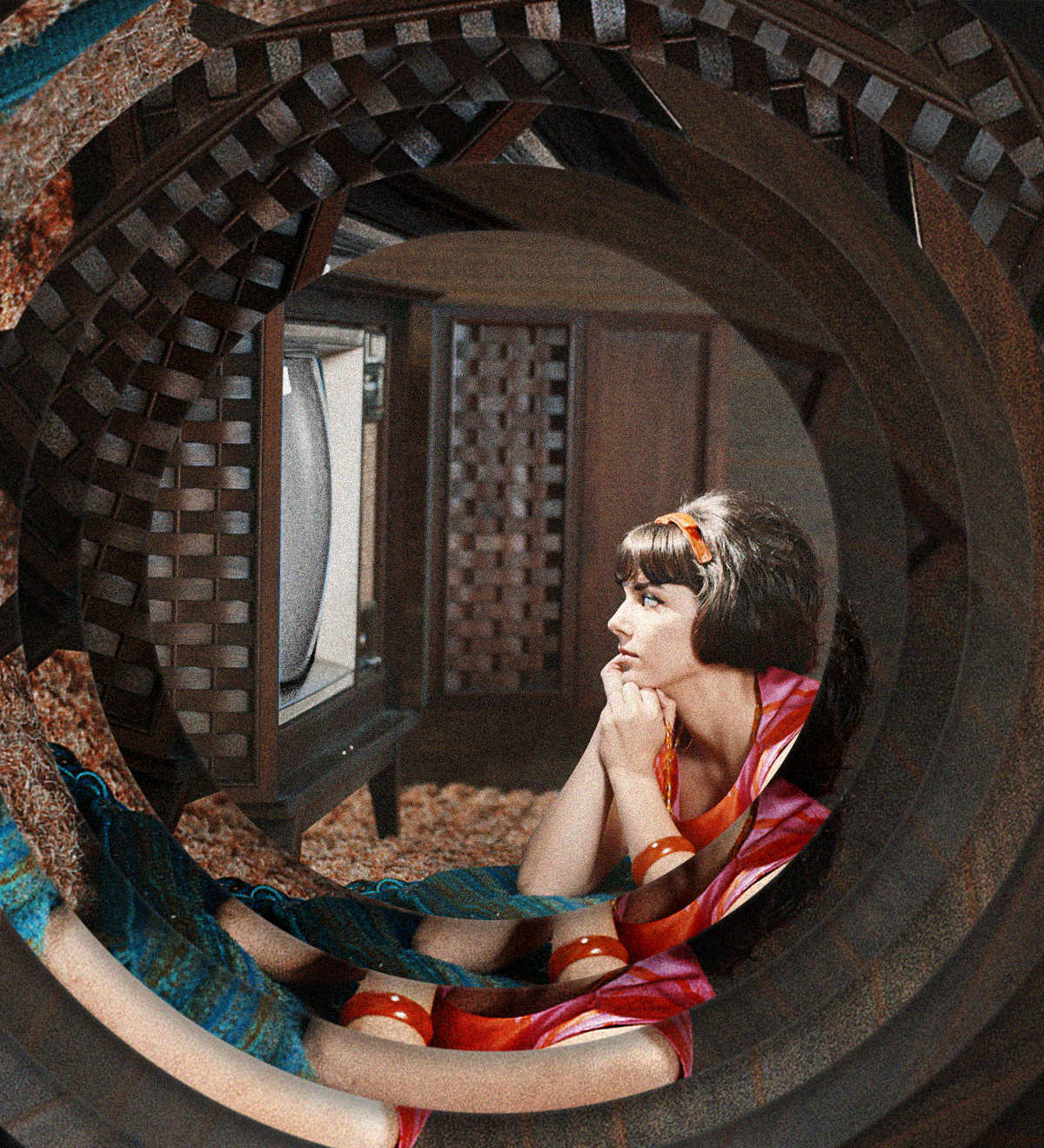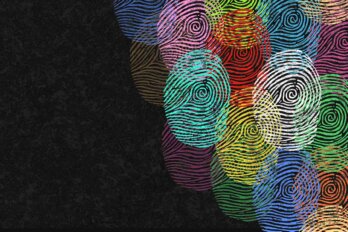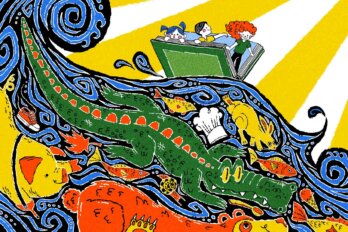Listen to an audio version of this story
For more audio from The Walrus, subscribe to AMI-audio podcasts on iTunes.
For the past fifteen months, I have avoided many things: sourdough starters, quarantinis, think pieces about the future of sweatpants. But the one trend I succumbed to was the pandemic playlist. To cope with all the loneliness and anxiety, people on social media were curating songs, and I accepted one friend’s invitation to make my own list. Unlike other Spotify playlists I came across, like “Coronavirus beats to NOT panic to” (has Coldplay, hard pass) and “Work from Home” (no Coldplay, thankfully, but so much Justin Bieber), not one of the songs on my list had been released in the last twenty years. Bieber hadn’t even been born when some of my picks were sent out into the world.
“On Fire,” from Sebadoh’s 1996 album, Harmacy, was a song that I played nonstop in the fall of 1997, upon moving to a new city over 3,000 kilometres from home to attend a university that I knew only from the pages of its outdated catalogue. Then there was “Violet,” a 1994 Hole track that got me through a painful breakup. (I played it so often that friends would eventually try to hide the CD every time they came over to deliver beer, burritos, and Ben & Jerry’s.) I ended my playlist with Hüsker Dü’s 1986 “No Promise Have I Made,” a song that helped me process my grandpa’s death and work through my regret of not seeing him more often in his later years. When the present was uncertain and the future still on pause, old songs like these grounded me. And I wasn’t the only one who felt this way: in the early days of the pandemic, Spotify reported a 54 percent increase in nostalgia-themed playlists.
The nostalgia evoked by pop culture from the past—be it TV, books, or Bennifer—has proven to be a popular coping mechanism. In a 2020 Nielsen survey, more than half of respondents said they had rewatched episodes of a favourite show. It seems likely that these old favourites were one way of getting through the early stages of the pandemic. A higher percentage said they had listened to music they used to listen to but hadn’t heard in a while. Nostalgia acted as a support system, reminding us of a time when we were more easily connected to people, when we could travel, and when we wore pants with actual buttons.
According to Nielsen, one of the most streamed shows of 2020 in the US was The Office. This popularity made sense as we searched for the security, community, and day-to-day routine that office life can provide (even if you have a boss like Michael Scott). Friends was also popular—Ross and Rachel were there for you even when your own friends couldn’t be. Spending hours rewatching Mad Men transported us back to the security of our prepandemic lives, before we experienced Zoom fatigue and SkipTheDishes commercials completely ruined Jon Hamm. Rewatching also minimized the element of surprise at a time when the world was stressful enough.
Over the past year, pop culture became more than just a guilty pleasure or conversation starter: we relied on it to provide a sense of community, to help us survive, to help us feel connected. But now, as the world reopens, our long-standing obsession with reboots, remakes, and rewatches—all of which thrived during the pandemic—might just be the thing we leave behind. Once we can safely hang out with our own friends again, do we really need Ross and Rachel?
“The time periods over history that have been associated with greater nostalgia tend to be times of great transition.” That’s Krystine Batcho, a professor of psychology at Le Moyne College, speaking to the CBC’s Nora Young in a 2020 interview. This idea isn’t surprising: after great upheavals, it’s only natural that people crave soothing things that have brought them joy in the past—things that act as a buffer and help them navigate the uncertainty of change. We need nostalgia to help us access feelings of control, community, and innocence. Periods of change, like the ongoing pandemic, can also lead to feelings of isolation and loneliness, which, according to Batcho, can be triggers for nostalgia.
Revisiting pop culture from the past is about much more than just the forty minutes of escape an episode of Gossip Girl provides—it may be good for your health too. A 2016 study published in Social Cognitive and Affective Neuroscience found that “childhood-related visual stimuli” stimulates reward pathways in our brain that make us feel good. Nostalgia can improve our mood and increase confidence, and some research shows it reduces cortisol levels, which may mean our bodies are better able to respond to stress, depression, anxiety, and trauma. The old favourites can also make us feel more optimistic: “Nostalgia mobilizes us for the future,” Clay Routledge, author of Nostalgia: A Psychological Resource and a psychology professor at North Dakota State University, told National Geographic in a 2020 interview. “It increases our desire to pursue important life goals and our confidence that we can accomplish them.”
As the pandemic stretched on, our obsession with nostalgia seemed to intensify. Not only could people binge old reliable favourites but shows from Parks and Recreation to Saved by the Bell were resurrected (in some cases, just for one pandemic-themed episode). For a two-week period, my Twitter feed was obsessively stuck in a chaise lounge on the lanai with The Golden Girls, a show that last aired in 1992 but found a new life on Amazon Prime. On top of rewatching the classic episodes, viewers could enjoy an online Zoom special featuring an all-Black cast including Regina King and Tracee Ellis Ross.
Virtual table reads gave old movies new life, with stars recreating everything from Fast Times at Ridgemont High to Dazed and Confused. Twitter felt like one big high school reunion when Wilson Cruz, who played Rickie Vasquez, tweeted a picture of the cast of My So-Called Life reuniting on Zoom around twenty-five years after the show ended. Seeing familiar faces was comforting, and for many, it offered the chance to revisit their own high school years—flannel, Sassy magazine, and grunge all included. The rewatch and reboot obsession kept us stuck in a pop culture feedback loop, but now, as we’re nearing the end of the pandemic, maybe it’s time to break that cycle.
In recent years, producers have tried to cash in on our obsession with retreading familiar ground by green-lighting reboots of everything from the not-so-old hits like Dexter to the comparatively ancient The Jetsons. My friends responded to the announcement of the reboot of Frasier, a show that last aired in 2004, with so much excitement that our group chat was all tossed salads and scrambled eggs. They weren’t alone in their reaction—plenty of reboots were greeted with the enthusiasm usually reserved for a hot new Netflix show or summer blockbuster—but I think that, as we return to our prepandemic routines, we may not be so enthusiastic when these projects are finally released.
Just as the world is hitting play, pop culture is too. As TV and movie production is hitting its stride and bands increasingly return to the studio and stage, there will be more and more new options for us to embrace. Faced with the prospect of seeing a new story in an actual theatre or watching a new band play a live show, hanging out at home with the Golden Girls just doesn’t have the same appeal it once did. Thank you for being a friend, I’m off to the multiplex now! Repeating the past grounded us for a long time, but going forward, it may only hold us back.
It’s also possible that the playlists and movies helping us through the pandemic will become painful reminders of all the loneliness, uncertainty, and fear we have experienced. I, for one, haven’t listened to my pandemic playlist in months—it has become a time capsule that’s best left sealed and forgotten. These days, I crave the new.
My theory, however, is just that: a theory. Deadline reported that the first episode of HBO Max’s reboot of Gossip Girl drew record audiences and was in the number-one trending spot on Twitter. Space Jam: A New Legacy, the sequel to the 1996 film, was released in July. It was projected to gross $20 million (US) on its opening but ended up making over $31 million. And Instagram can’t seem to get enough of behind-the-scenes photos of Carrie and the girls filming the Sex and the City reboot, even without Kim Cattrall.
It will take some time to see if a culture shift is in the cards, but there is one thing I do know for certain: I never want to hear The Office’s theme song ever again.







